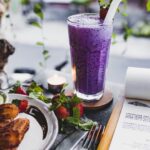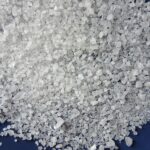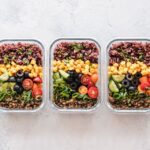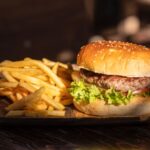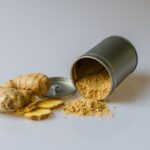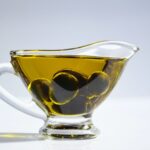Ever wondered why losing weight seems like a never-ending rollercoaster ride? Today, we unravel the tapestry of sustainable weight loss, shedding light on the factors often overlooked in the quest for a healthier body. From the role of hydration to the power of nutrient-dense foods, from the significance of mindful eating to the importance of a strong support system, we’re here to guide you on this transformative journey.
Key Takeaways
- Motivate yourself to make sustainable lifestyle changes for successful, long-term weight loss and improved wellbeing.
- Take control of your journey with personalized diet and exercise plans based on TDEE & BMR calculations.
- Incorporate nutrient dense foods, water instead of sugary drinks, physical activity & mindful eating techniques into your routine for maximum results!
Categories in this section:
What no one tells you about weight loss

Starting a weight loss journey goes beyond just shedding pounds. It involves understanding your body’s unique mechanisms, making conscious choices, and adopting lifestyle modifications that enhance overall health.
We’ll start by clarifying some less-known aspects of body weight loss.
Water weight vs fat loss
The numbers on the scale can be deceiving. Losing weight isn’t just about shedding pounds; it’s about losing fat. When you first start a diet or exercise regimen, you may experience rapid weight loss. However, this is often due to a decrease in water weight rather than fat loss.
Hence, prioritizing body fat loss over mere weight loss can yield more lasting results.
How long losing weight takes
Contrary to what quick-fix diets promise, weight loss isn’t an overnight process. A healthy rate of weight loss is typically 1-2 pounds per week. But remember, the journey to weight loss is not a race. It’s about making sustainable changes that you can stick to in the long run.
Recognizing Weight Loss
One of the most exciting aspects of a weight loss journey is seeing the results of your hard work. However, the timeline for noticeable weight loss varies from person to person. On average, it takes about 4 to 6 weeks for weight loss to become noticeable. This can depend on various factors such as starting weight, diet, exercise routine, and individual metabolism. Remember, sustainable weight loss is a gradual process, so patience is key.
How to calculate your TDEE and BMR
Grasping your body’s energy requirements is an integral part of your weight loss journey. Your Total Daily Energy Expenditure (TDEE) is the total number of calories you burn in a day, while your Basal Metabolic Rate (BMR) is the number of calories you burn at rest. Knowing these numbers, along with your body mass index, can help you set realistic goals and tailor your diet and exercise plan to suit your needs.
Cutting calories vs exercise
While cutting calories can help create a calorie deficit necessary for weight loss, it’s only one side of the coin. The other side is exercise.
Regular physical activity not only burns calories but also builds muscle, which can boost your metabolism and help you burn more calories, even at rest.
How to avoid yo-yo dieting
Yo-yo dieting, the cycle of losing and regaining weight, can wreak havoc on your body and hinder your long-term weight loss goals. Instead of falling into this trap, focus on making sustainable changes that you can maintain in the long run.
Jumpstarting Your Weight Loss
If you’re looking to kickstart your weight loss journey, it’s crucial to start with small, manageable changes. Begin by setting realistic goals and making simple lifestyle modifications like drinking more water, incorporating more physical activity into your daily routine, and swapping out unhealthy food options for nutrient-dense alternatives. Remember, the key to sustainable weight loss is not about drastic changes but consistent efforts over time.
Measuring Weight Loss
Weight loss progress can be measured in multiple ways, not just by the number on the scale. Here are some effective ways to track your weight loss journey:
Body Mass Index (BMI)
BMI is a calculation that takes into account your weight and height to determine whether you’re in a healthy weight range. While it doesn’t measure body fat directly, it can give you an idea of whether you’re in a healthy weight range.
Waist Circumference
Measuring your waist circumference can help you understand how much fat you’re carrying around your abdomen. Abdominal fat is linked to several health concerns, so it’s an important measure to track.
Body Fat Percentage
Body fat percentage is the total mass of fat divided by total body mass. Your body fat percentage can be measured using various methods, including skinfold measurements and bioelectrical impedance analysis (BIA).
Progress Photos
Taking progress photos can be a great way to visually track your weight loss journey. Seeing how your body changes over time can be a powerful motivator.
Clothing Fit
How your clothes fit is another good indicator of weight loss. If your clothes start to feel loose, it’s a sign that you’re losing weight, even if the scale isn’t moving.
Remember, it’s important to focus on overall health and not just the number on the scale. Regular exercise, a balanced diet, and a positive mindset are just as important as the weight you lose.
Safe weight loss
Although it can be tempting to take drastic measures for rapid weight loss, one should remember that slow and consistent progress often leads to victory. Rapid weight loss can lead to muscle loss, nutrient deficiencies, and a host of health issues, while a steady rate of weight loss can lead to more lasting results.
Risks of losing weight too fast
Losing weight too fast can lead to a host of health issues, including fatigue, nutrient deficiencies, and muscle loss. Instead of aiming for quick weight loss, focus on making sustainable changes that you can maintain in the long run.
Sustainable weight loss
When it comes to achieving a healthy weight, sustainability is key. This means making changes that you can stick to in the long run, rather than resorting to quick fixes that are difficult to maintain. To lose weight safely, this includes eating a balanced diet, engaging in regular physical activity, and managing stress. Incorporating weight management strategies into your daily routine can help you maintain a healthy weight.
Understanding Weight Loss Plateaus
It’s important to be mindful of weight loss plateaus. These are periods where weight loss may stall despite continued efforts. This is a common part of the weight loss journey and not a reason to be discouraged. Adjusting your diet or exercise routine, ensuring adequate sleep, and managing stress can help overcome these plateaus and continue on your path to sustainable weight loss.
Dealing with Loose Skin After Weight Loss
After significant weight loss, you may find yourself with loose skin. This is a common and natural occurrence as the skin takes time to adjust to your new body shape. Regular strength training can help to tone and tighten the skin. Hydration and nutrition also play a crucial role in skin health. If loose skin is a concern, consider consulting with a healthcare professional or a dermatologist for personalized advice and potential treatments.
Regaining Hair After Weight Loss
Hair loss after significant weight loss is a common issue, often resulting from nutritional deficiencies or the stress that rapid weight loss can place on the body. However, there are effective strategies to encourage hair regrowthand maintain hair health during and after a weight loss journey.
Regaining Lost Breast Size
Breast size reduction is a common effect of significant weight loss, as breasts primarily consist of fatty tissue. While it’s not always possible to regain the exact pre-weight loss breast size, there are approaches to enhance breast appearance and firmness after weight loss.
Tightening Neck Skin After Weight Loss
After significant weight loss, loose or sagging skin around the neck area can be a concern, but there are effective ways to address it. Engaging in targeted neck exercises, such as neck stretches, chin lifts, and gentle head tilts, can strengthen the underlying muscles and contribute to a more toned appearance. Nutrition also plays a crucial role; a diet rich in protein, vitamins C and E, and essential minerals can enhance skin elasticity and health. Ensuring adequate hydration by drinking plenty of water and using moisturizers can maintain skin hydration and firmness.
The Power of Hydration
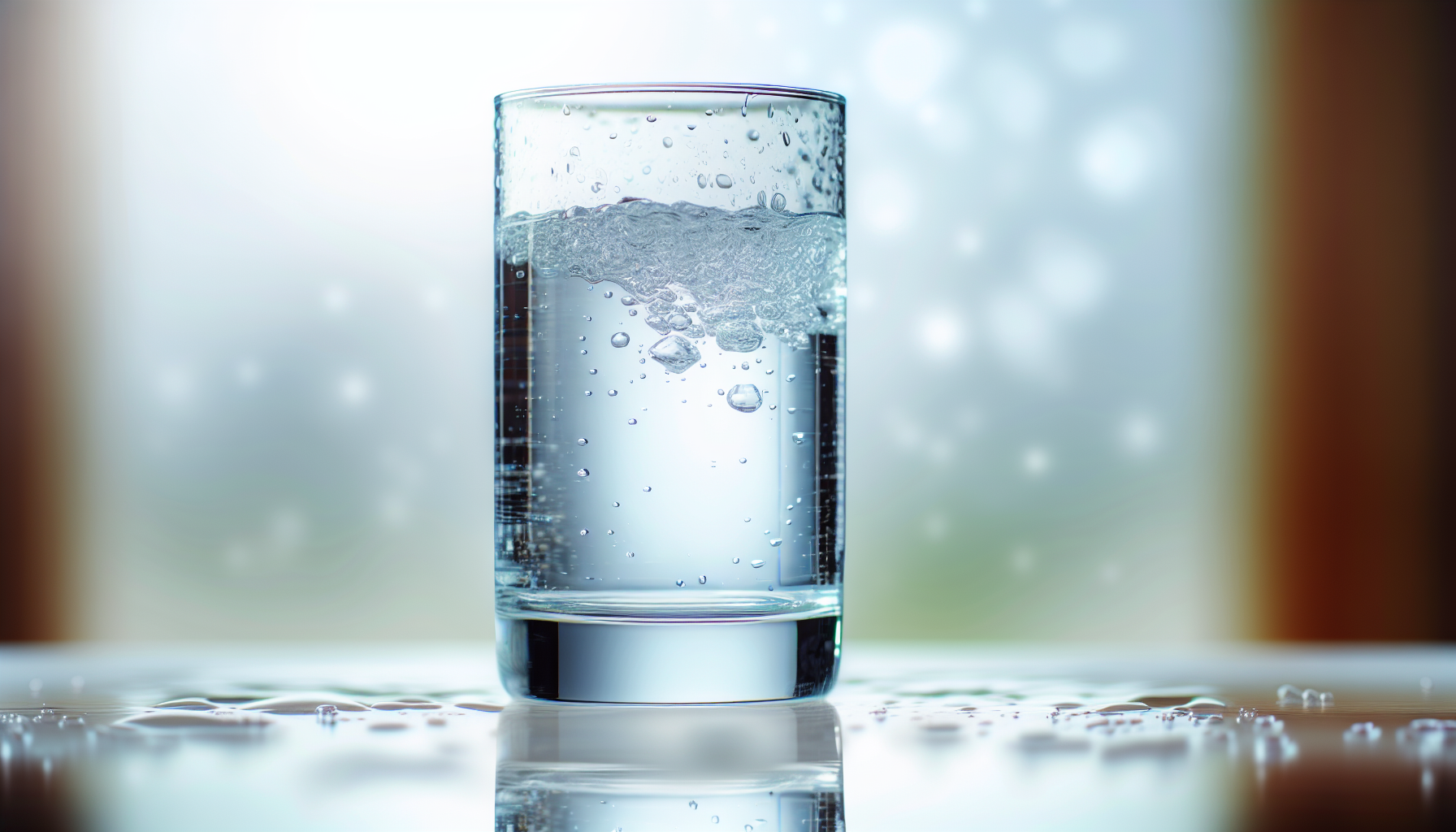
Hydration has a significant role in your weight loss journey. Drinking plenty of water not only helps keep your body functioning properly but also aids in weight loss. But not all beverages are created equal.
We’ll examine the benefits of water and why it stands as your top choice for hydration.
Water vs. Sugary Beverages
While sugary beverages may quench your thirst, they’re also loaded with empty calories that can lead to weight gain. On the other hand, water is calorie-free and can actually help you lose weight by boosting your metabolism and curbing your appetite.
Drinking Water Before Meals
Did you know that drinking water before meals can help you lose weight? It’s true! Consuming water before meals can help suppress your appetite and reduce calorie intake, aiding in weight loss.
Drinking Coffee for Weight Loss
Believe it or not, your morning cup of joe could aid in your weight loss journey. Coffee is known to boost metabolism and increase fat burning, thanks to its caffeine content. Additionally, it can act as an appetite suppressant, helping you consume fewer calories throughout the day. However, it’s crucial to keep your coffee consumption in moderation and avoid high-calorie additions like sugar and cream.
Green Tea
Green tea is widely recognized as a powerful ally in weight loss efforts, revered for its rich content of antioxidants and metabolism-boosting properties. The key compound in green tea, epigallocatechin gallate (EGCG), is known for its ability to enhance fat burning, particularly during exercise. Additionally, the caffeine present in green tea can help in boosting energy levels and improving exercise performance, further contributing to weight loss. Regular consumption of green tea has also been linked to increased metabolic rate and greater fat oxidation. Beyond its weight loss benefits, green tea is celebrated for its potential to improve overall health, including reducing the risk of heart disease and certain types of cancer.
Kombucha
Kombucha, a fermented tea beverage, has gained popularity in the health and wellness community, including among those looking for natural weight loss aids. This effervescent drink is made by fermenting tea with a symbiotic culture of bacteria and yeast (SCOBY), resulting in a beverage rich in probiotics. These probiotics can improve gut health, which is crucial for effective digestion and metabolism, factors important in weight management. Kombucha is also known for containing acetic acid, similar to apple cider vinegar, which has been linked to reduced belly fat and improved metabolism. Additionally, its low calorie content makes it a healthier alternative to sugary sodas and juices. However, it’s important to choose kombucha varieties with lower sugar content to maximize its benefits.
Lime Water
Lime water, a refreshing beverage made by adding lime juice to water, can be a beneficial addition to your weight loss diet. It’s rich in vitamin C and antioxidants, which can boost your immune system and promote skin health. Moreover, lime water can aid digestion, keep you hydrated, and add flavor to your drink without adding too many calories. Drinking lime water before meals may also help control your appetite and prevent overeating, supporting your weight loss efforts.
Milk
When it comes to weight loss, milk, particularly low-fat and non-fat varieties, can be a beneficial addition to your diet. It’s a good source of protein, which can keep you feeling full and satisfied, thereby aiding in weight control. Plus, it’s packed with essential nutrients like calcium and vitamin D.
Bay Leaf Tea
Bay leaf tea, esteemed for its aromatic properties and health benefits, is a valuable addition to weight loss diets. This herbal infusion, made by steeping bay leaves, is rich in catechins and caffeine, which are known to enhance metabolism and aid in fat burning. Additionally, its diuretic qualities help in minimizing water retention, and its digestive properties support overall gut health.
Cucumber Water
Cucumber water can be an excellent addition to a weight loss diet. Infusing water with cucumber slices adds a subtle flavor, making it more enjoyable to drink, which can help increase overall water intake. Staying well-hydrated is crucial for maintaining a healthy metabolism and aiding in weight loss. Cucumbers are low in calories and contain small amounts of vitamins and minerals, which can contribute to overall health without adding significant calories. Additionally, the act of drinking water before or with meals can aid in a feeling of fullness, potentially reducing the amount of food consumed. Cucumber water is also known for its potential detoxifying properties, helping to flush out toxins from the body.
Banana Peel Tea
Banana peel tea is an innovative and health-conscious choice for those looking to aid their weight loss journey. Made by boiling banana peels in water, this tea harnesses the nutritional benefits of the peels, which are rich in potassium, dietary fiber, and antioxidants. The high fiber content in banana peel tea can help in feeling fuller for longer, thereby reducing the likelihood of unnecessary snacking and overeating. This, in turn, aids in managing calorie intake effectively. Furthermore, the antioxidants present in the tea support metabolism and overall health. Drinking banana peel tea can be a soothing, low-calorie beverage option that not only helps in weight management but also aligns with sustainable practices by utilizing a part of the fruit that is typically discarded.
Turmeric Tea
Turmeric tea is a celebrated beverage in the realm of natural weight loss aids, renowned for its potent health properties. Central to its benefits is curcumin, the active compound in turmeric, known for its anti-inflammatory and antioxidant properties. These properties not only contribute to overall health but also assist in weight loss efforts. Curcumin in turmeric tea helps to boost metabolism and reduce fat tissue growth. Moreover, turmeric tea aids in regulating blood sugar levels and reducing insulin resistance, which can prevent excess fat from being stored in the body. Its anti-inflammatory effects also aid in combating obesity-related inflammation. Drinking turmeric tea can be a soothing, flavorful way to support weight loss, especially when paired with a balanced diet and regular exercise
Cinnamon Tea
Cinnamon tea can be a valuable addition to a weight loss regimen. Known for its sweet, warm, and comforting taste, cinnamon is also loaded with powerful antioxidants and anti-inflammatory properties. Drinking cinnamon tea may aid in weight loss by regulating blood sugar levels and reducing insulin resistance, which helps in minimizing unnecessary snacking and cravings. The spice’s thermogenic properties also mean that it can help boost metabolism, leading to more efficient calorie burning. Additionally, cinnamon has been linked to reducing bad cholesterol levels, which is beneficial for overall heart health.
Nutrient-Dense Foods for Weight Loss
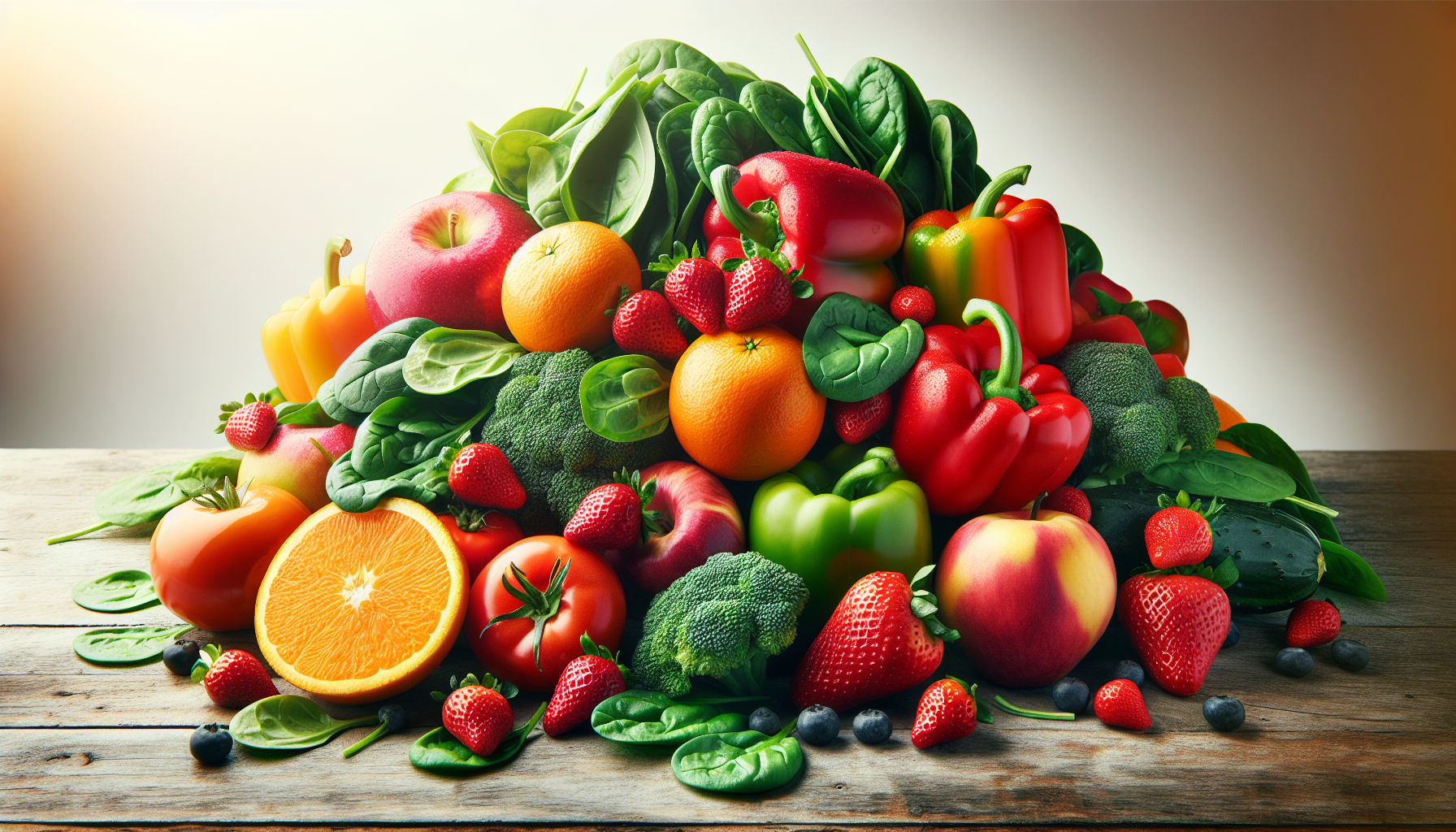
When it comes to weight loss, it’s not just about eating less—it’s about healthy eating. Incorporating nutrient-dense foods into your diet can help you feel full, reduce cravings, and provide your body with the nutrients it needs to function optimally. Monitoring your food intake is essential to ensure you’re consuming the right amount and types of foods for your goals.
Protein-Packed Choices
Protein has a significant role in weight loss. It helps you feel full, preserves muscle mass during weight loss, and can even give your metabolism a slight boost.
Including a source of protein, such as lean meat, in each meal can help you reach your weight loss goals more effectively.
Fiber-Filled Options
Fiber is another key nutrient for weight loss. It helps you feel full, slows the absorption of sugar into your bloodstream, and helps keep your digestive system healthy.
Including plenty of fiber-rich foods and healthy fats in your diet can help you avoid overeating and make weight loss easier.
Weight Loss Supplements: An Overview
Supplements can play a supplementary role in weight loss, acting as a tool to support your efforts in diet and exercise. They may help enhance your metabolism, reduce appetite, increase fat burning, and provide you with the necessary nutrients. However, they are not a magic solution for weight loss and should be used in conjunction with a balanced diet and regular physical activity for optimal results.
MCT Oil
MCT oil is a supplement often used by those looking to shed extra pounds. MCT stands for medium-chain triglycerides, a type of fat that the body metabolizes differently than most types. It’s quickly absorbed and converted into energy, potentially aiding in weight loss by increasing fullness and boosting your metabolism. However, while MCT oil can be a helpful tool in your weight loss journey, it should be used in conjunction with a balanced diet and regular exercise for optimal results.
Ginger Shots
Incorporating ginger shots into your diet could potentially aid in your weight loss journey. Ginger is known for its anti-inflammatory properties and its ability to aid digestion, reduce nausea, and help fight the flu and common cold. Some studies suggest that ginger could increase metabolism and fat burning, while reducing hunger and fat absorption. However, ginger shots should be used in conjunction with a balanced diet and regular exercise for optimal weight loss results.
Berberine
Berberine is a compound found in several different plants, including the barberry shrub, and has been used in traditional medicine for centuries. Recent studies suggest that berberine may aid in weight loss and improve overall health. It works by reducing insulin resistance, boosting your metabolism, and slowing down the breakdown of carbohydrates in your gut. However, it’s important to consult with a healthcare provider before starting any new supplement regimen.
Hummus
Hummus, a popular Middle Eastern spread made from chickpeas, tahini, olive oil, lemon juice, and garlic, is not only delicious but also a great addition to a weight loss diet. Chickpeas, the main ingredient in hummus, are high in fiber and protein, both of which are essential for weight management. The fiber content helps in promoting a feeling of fullness, reducing overall calorie intake by curbing hunger pangs. Protein is vital for muscle repair and growth, especially beneficial if combined with an exercise regimen. Additionally, the healthy fats from olive oil and tahini in hummus contribute to satiety and can help control cravings. Hummus is also versatile, making it a perfect dip for vegetables, a spread for whole-grain bread, or a healthy addition to salads.
Bread
Bread gets a mixed reputation in the context of weight loss. While it’s a source of carbohydrates, which are essential for energy, the key is to choose the right type of bread and consume it in moderation. Whole grain breads, for instance, are a healthier choice as they are high in fiber and nutrients. The fiber content helps in promoting a feeling of fullness, reducing the likelihood of overeating, and aids in digestion, contributing to better gut health. Opting for whole grain varieties also means a lower glycemic index, which helps in stabilizing blood sugar levels and managing hunger.
Flax Seeds
Flax seeds are highly regarded for their weight loss benefits and overall health properties. These tiny seeds are an excellent source of fiber, omega-3 fatty acids, and lignans, all of which contribute to a healthier weight management plan. The high fiber content in flax seeds promotes a feeling of fullness, reducing the urge to overeat and helping to control overall calorie intake. This fiber also aids in digestion and can improve gut health. Omega-3 fatty acids in flax seeds are known for their anti-inflammatory benefits, while lignans have antioxidant properties. Including ground flax seeds in your diet is easy; they can be sprinkled over salads, blended into smoothies, mixed into yogurt, or used in baking.
Murmura
Murmura, also known as puffed rice, is a light and airy snack popular in many parts of the world, particularly in Indian cuisine. Murmura is low in calories, which makes it an attractive option for those looking to lose weight. However, it’s important to note that murmura is primarily made up of carbohydrates and has a minimal amount of fiber and protein. This means it can provide a quick source of energy but may not be very satiating, potentially leading to overeating if not consumed mindfully. For a more balanced approach, murmura can be combined with other nutritious ingredients like roasted nuts, seeds, and vegetables to enhance its fiber and protein content. Such combinations can make it a more filling snack and help in controlling portion sizes.
Rice
Rice can play a role in weight loss when consumed properly. It’s a source of carbohydrates, essential for energy, but the key lies in choosing the right type of rice and being mindful of portion sizes. Brown rice, in particular, is a whole grain that is high in fiber and nutrients, contributing to a feeling of fullness and aiding in digestion, which can help prevent overeating. The fiber in brown rice also helps in stabilizing blood sugar levels, reducing spikes and crashes that can lead to cravings. While white rice is more processed and lacks some of the nutritional benefits of brown rice, it can still be included in a weight loss diet in moderation.
Ashwagandha
Ashwagandha, a revered herb in Ayurvedic medicine, can also play a part in your weight loss journey. Known for its adaptogenic properties, Ashwagandha can help manage stress levels, a key factor in weight gain. Some studies suggest that it can also improve energy levels and enhance athletic performance, aiding in more effective workouts. However, it’s essential to consult with a healthcare provider before incorporating Ashwagandha or any supplement into your weight loss plan.
Potatoes
Potatoes can actually be a healthy and beneficial component of a weight loss dietwhen prepared and consumed appropriately. They are a natural source of carbohydrates, fiber, and important nutrients like potassium and vitamin C. The high fiber content in potatoes, especially in the skin, promotes a feeling of fullness, which can help in controlling appetite and reducing overall calorie intake. Additionally, potatoes have a high water content, making them surprisingly low in calories per volume. The key to including potatoes in a weight loss diet is in the preparation method and portion size. Baking, boiling, or steaming potatoes, rather than frying, and avoiding high-calorie toppings can make them a healthy choice.
Avocadao
Avocado is increasingly recognized as a superfood in the context of weight loss and overall health. This creamy, nutrient-rich fruit is high in healthy fats, particularly monounsaturated fat, which can help in reducing hunger and appetite. The presence of these healthy fats aids in the absorption of other fat-soluble nutrients and contributes to a feeling of fullness, potentially preventing overeating. Avocados are also a good source of fiber, which is beneficial for digestive health and further aids in satiety. Additionally, they contain a variety of essential vitamins and minerals, contributing to overall nutritional balance. Despite its high fat content, avocado can be part of a weight loss diet when consumed in moderation.
Ghee for Weight Loss
Ghee, a type of clarified butter, is a staple in traditional Indian cooking and Ayurvedic medicine. It’s rich in healthy fats, which can help you feel fuller for longer, thereby aiding in weight loss. Additionally, ghee is known for its anti-inflammatory properties and can support gut health. However, like all fats, ghee is high in calories, so it should be consumed in moderation as part of a balanced diet.
Cactus
Believe it or not, cacti can play a significant role in your weight loss journey. Certain types of cacti, like the prickly pear and hoodia gordonii, have been used in traditional medicine and are now gaining recognition in the weight loss industry. Prickly pear cactus is high in fiber, antioxidants, and carotenoids, promoting a feeling of fullness and aiding digestion. Hoodia gordonii, on the other hand, is known for its appetite-suppressing properties.
Black Seed for Weight Loss
Black seed, or Nigella sativa, is a plant native to Southwest Asia. It’s been used in traditional medicine for centuries due to its therapeutic properties. Recent studies suggest that black seed might aid in weight loss by influencing metabolism, reducing inflammation, and suppressing appetite. However, more research is needed, and it’s advisable to incorporate black seed into a balanced diet and regular exercise routine for optimal results.
Ginger Oil
Ginger oil, extracted from the root of the ginger plant, is another tool that can aid your weight loss journey. Known for its potent anti-inflammatory and antioxidant properties, ginger oil can help boost your metabolism and promote feelings of satiety. It can be used in aromatherapy, massages, or added to meals.
Meal Replacement Shakes
Meal replacement shakes can be a convenient and effective tool for weight loss. These shakes are designed to provide all the nutrients you need in a single serving, often with fewer calories than a typical meal. They can help control portion sizes and are usually high in protein, which can keep you feeling full and satisfied. However, they should not replace all meals, as whole foods offer nutritional benefits that shakes cannot replicate.
Pineapple and Weight Loss
Pineapple, a tropical fruit rich in vitamins, antioxidants, and enzymes, can be a beneficial addition to a weight loss diet. Its high fiber content can promote feelings of fullness, helping to control overeating. Furthermore, the bromelain enzyme present in pineapple aids in digestion and can potentially support weight loss.
White Vinegar for Weight Loss
White vinegar, primarily composed of acetic acid, can potentially aid in your weight loss journey. It’s known to help control blood sugar levels, curb cravings, and boost feelings of fullness, thereby reducing calorie intake.
Quinoa
Quinoa, a whole grain rich in protein and fiber, can be a beneficial addition to a weight loss diet. Its high protein content can increase satiety and reduce appetite, while its fiber content can aid in digestion and promote feelings of fullness, thereby aiding in weight control. Quinoa is also packed with essential vitamins and minerals, making it a nutrient-dense choice for those looking to shed pounds.
Goli Gummies
Goli Gummies have gained popularity as a convenient and tasty way to incorporate apple cider vinegar (ACV) into one’s diet, which is known for its potential weight loss benefits. These gummies contain ACV, along with other vitamins and natural ingredients, offering a palatable alternative to the strong taste and acidity of liquid apple cider vinegar. ACV, the primary ingredient in goli gummies, is believed to aid in weight loss by promoting a feeling of fullness, thereby reducing overall calorie intake. It may also help in regulating blood sugar levels, which can curb cravings and stabilize appetite.
Yoghurt
Yogurt can be an excellent addition to a weight loss diet. It’s rich in important nutrients like calcium, protein, and probiotics, which are beneficial for digestive health. The high protein content in yogurt helps in keeping you feeling fuller for longer, reducing the likelihood of overeating and snacking on unhealthy foods. This can lead to a lower overall calorie intake, which is crucial for weight loss.
Probiotics
Probiotics, known as “good” bacteria, can play a role in weight loss and overall gut health. They can balance your gut flora, which can help with weight loss and prevent weight gain. Some strains of probiotics such as Lactobacillus rhamnosus and Bifidobacterium lactis have been found to be particularly effective for weight loss. Remember, while probiotics can support your weight loss journey, they should be used as part of a balanced diet and regular exercise routine for optimal results.
Popcorn
Believe it or not, popcorn can be a healthy snack for weight loss. It’s high in fiber which can help you feel full and curb cravings. Plus, it’s low in calories, especially when air-popped and enjoyed without butter or sugary toppings. Just remember, portion control is key!
Sea Moss
Sea moss, also known as Irish moss, is a type of seaweed that has gained popularity for its potential health benefits. It’s rich in fiber and can help promote feelings of fullness, which is beneficial for weight management. Additionally, sea moss is packed with essential nutrients and antioxidants, making it a nutrient-dense addition to a balanced diet. However, more research is needed to fully understand the potential weight loss benefits of sea moss.
Beans
Beans are a fantastic addition to any weight loss diet. They’re packed with protein and fiber, which can keep you feeling full and satisfied, reducing the likelihood of overeating. Plus, they’re low in fat and calories, making them a nutrient-dense food choice. From black beans to lentils, incorporating a variety of beans into your diet can contribute to successful weight loss.
Balsamic Vinegar
Balsamic vinegar, a dark, concentrated, and intensely flavored vinegar made wholly or partially from grape must, can be a beneficial addition to your weight loss diet. When it comes to losing weight, balsamic vinegar is low in calories and can add a burst of flavor to your meals, making it easier to stick to your diet.
Lemon and Ginger Water
Lemon and ginger water is a popular beverage choice for those seeking natural weight loss solutions. This simple yet potent drink combines the refreshing zest of lemon with the spicy warmth of ginger, creating a detoxifying and metabolism-boosting concoction. Lemon is high in vitamin C and antioxidants, which aid in digestion and can help regulate blood sugar levels, potentially reducing cravings. Ginger, known for its anti-inflammatory properties, may enhance thermogenesis, the body’s fat-burning process. Additionally, this infusion aids in hydration, which is crucial for efficient metabolism and weight loss. Regular consumption of lemon and ginger water, especially when taken in the morning or before meals, can support weight loss efforts by providing a low-calorie, nutrient-rich alternative to high-calorie beverages, while promoting overall digestive health and well-being.
Chia Seed Smoothies
Chia seed smoothies are a nutritious and effective tool for weight loss, combining taste with health benefits. Chia seeds are rich in fiber, protein, and omega-3 fatty acids, making them an excellent addition to smoothies for those looking to shed pounds. The high fiber content promotes a feeling of fullness, reducing the likelihood of overeating, while the protein helps in muscle repair and growth, especially beneficial after workouts. When blended into smoothies with fruits, vegetables, and other healthy ingredients like almond milk or Greek yogurt, chia seeds create a delicious, satisfying meal or snack. This not only assists in lowering overall calorie intake but also boosts metabolism and provides essential nutrients.
Protein Shakes for Weight Loss
Protein shakes have become a popular weight loss tool. They’re not only convenient and easy to use, but they also provide a high-quality source of protein, which can help promote feelings of fullness, reduce appetite.
Mindful Eating Techniques
In the context of weight loss, not only what you eat matters, but also how you eat. Practicing mindful eating can help you listen to your body’s hunger and fullness cues, enjoy your food more, and ultimately, lose weight.
Identifying Emotional Triggers
Emotions can play a big role in your eating habits. By identifying emotional triggers that lead to overeating, you can learn to cope with these emotions in healthier ways and prevent emotional eating.
Practicing Portion Control
Along with mindful eating, practicing portion control can help you manage your calorie intake, consume fewer calories, and lose weight. By serving yourself smaller portions, you can enjoy the foods you love without overeating.
Manifesting Weight Loss Through Positive Thinking
It’s worth noting that your mindset plays a crucial role in your weight loss journey. By adopting a positive outlook,you can manifest weight loss and push through challenges with more resilience. Visualizing your goals, practicing self-love, and maintaining a positive attitude towards your body and food can significantly influence your weight loss success. Remember, the power of positive thinking can be a game-changer in your journey towards a healthier you.
Exercise and Physical Activity for Weight Loss

Although diet significantly contributes to weight loss, physical activity is equally important. Regular exercise helps you burn calories, boost your metabolism, and build muscle, all of which can promote weight loss and help you lose weight.
Cardiovascular Activities
Cardiovascular activities like running, cycling, and swimming not only burn calories but also improve heart health. Including plenty of cardiovascular activity in your routine can help you create a calorie deficit and lose weight.
Strength Training
Strength training is another key component of a successful weight loss program. It helps you build muscle, which burns more calories than fat, even when you’re at rest.
Raising Core Body Temperature for Weight Loss
Increasing your core body temperature can aid in weight loss. This is because a higher body temperature can boost your metabolism, causing your body to burn more calories. Activities such as regular exercise, spending time in a sauna, or drinking warm water can help raise your core body temperature and potentially enhance your weight loss efforts.
Eating for Weight Loss When Weightlifting
When weightlifting for weight loss, it’s crucial to fuel your body with the right nutrients. Prioritize lean proteins like chicken, turkey, and fish to support muscle recovery and growth. Include complex carbohydrates such as whole grains and sweet potatoes for sustained energy. Don’t forget to incorporate plenty of fruits and vegetables for their essential vitamins and minerals. Lastly, healthy fats from sources like avocados, nuts, and seeds can help keep you satiated and support overall health.
The Role of Sleep and Stress Management

Your lifestyle habits, including sleep and stress management, can greatly impact your weight loss efforts. Getting enough sleep and managing stress can help you eat better, exercise more, and ultimately, lose weight.
Sleep and Hormone Regulation
Sufficient sleep is vital for weight loss. It helps regulate hormones that control hunger and satiety, and lack of sleep can lead to overeating and weight gain.
Aim for 7-9 hours of sleep per night to support your weight loss efforts.
Stress Reduction Techniques
Stress can also impact your weight loss efforts. High levels of stress can lead to overeating and weight gain.
Techniques like meditation, yoga, and deep breathing can help reduce stress and support your weight loss goals.
Creating a Support System
Maintaining a support system can significantly boost your weight loss efforts. Whether it’s friends, family, or professionals, having people who support, motivate, and hold you accountable can make the journey easier and more enjoyable.
Building a Network of Support
Having a network of friends and family who support your weight loss goals can make a big difference. They can provide encouragement, accountability, and motivation to stick to your healthy habits.
Professional Guidance
Professional guidance from dietitians, trainers, and therapists can provide personalized advice, support, and resources to help you on your weight loss journey.
Debunking Fad Diets and Quick Fixes
Even though fad diets and quick solutions may seem attractive, these often result in temporary weight loss and can pose harm to your health. Instead, focus on creating a balanced, sustainable lifestyle that includes a healthy diet, regular physical activity, and plenty of sleep to lose weight fast in a safe and effective manner.
The Truth About Detoxes and Cleanses
Despite their popularity, detoxes and cleanses often lead to temporary weight loss and can disrupt your body’s natural balance.
Instead of resorting to these quick fixes, focus on nourishing your body with a variety of nutrient-dense foods, including whole grains.
The Importance of Balanced Nutrition
Balanced nutrition is vital for weight loss and overall health. It provides your body with the nutrients it needs to function optimally, helps control hunger, and can support weight loss.
Weight Loss Surgery Options
Weight loss surgery, commonly referred to as bariatric surgery, represents a significant intervention in the treatment of obesity. It is typically considered in cases where non-surgical methods such as diet and exercise have not yielded sufficient results, or when obesity-related health complications require immediate attention. These medical weight loss methods work by altering the digestive system to facilitate weight loss, either by limiting how much one can eat, reducing the absorption of nutrients, or a combination of both
Qualifying for Weight Loss Surgery
Qualifying for weight loss surgery typically involves a thorough assessment of your health and medical history by a healthcare professional. Criteria may include a Body Mass Index (BMI) of 40 or higher, or a BMI of 35 or higher with serious weight-related health problems such as type 2 diabetes, high blood pressure, or severe sleep apnea. It’s also important that the candidate is prepared to make permanent lifestyle changes and follow the long-term follow-up plan to ensure the success of the surgery.
Gastric Bypass Surgery
Gastric bypass, also known as Roux-en-Y gastric bypass, is a type of weight-loss surgery that involves creating a small pouch from the stomach and connecting the newly created pouch directly to the small intestine. This surgery can significantly reduce the volume of food the stomach can handle, leading to weight loss.
Sleeve Gastrectomy
In a sleeve gastrectomy, part of the stomach is separated and removed from the body. The remaining section of the stomach is formed into a tube-like structure. This smaller stomach cannot hold as much food. It also produces less of the appetite-regulating hormone ghrelin, which may lessen your desire to eat.
Adjustable Gastric Band
This procedure involves placing a band around the upper part of the stomach to create a small pouch to hold food. The band limits the amount of food you can eat by making you feel full after eating small amounts of food.
Biliopancreatic Diversion with Duodenal Switch (BPD/DS)
BPD/DS is a procedure with two components. First, a smaller, tubular stomach pouch is created by removing a portion of the stomach, very similar to the sleeve gastrectomy. Next, a large portion of the small intestine is bypassed.
Remember, it’s important to discuss with your healthcare provider to understand which option is best for your specific circumstances.
Summary
To wrap it up, sustainable weight loss is a result of various interconnected factors – proper hydration, nutrient-dense foods, mindful eating, regular exercise, adequate sleep, effective stress management, and a strong support system. It’s about making lifestyle changes that you can maintain for the long run. So, here’s to taking one step at a time, embracing the journey, and celebrating every small victory along the way!
Frequently Asked Questions
How to lose 100 lbs?
Take the long-term approach and make lasting lifestyle changes to lose 100lbs. Track your calorie intake, switch to a high protein diet, increase fiber and cut out refined carbs, keep a photo diary, use an app, replace meals, store food properly. And build a fan club to stay motivated.
What are body wraps and how do they work for weight loss?
Body wraps are spa treatments where a material, often a natural fabric, is wrapped tightly around the body. These wraps are typically infused with various ingredients like herbs, essential oils, and minerals. The idea is that body wraps can promote weight loss by inducing sweating, thereby helping to shed water weight and toxins from the body. Some also claim that wraps can compress fat cells, though this is not scientifically proven.
Can the “Ice Trick” aid in weight loss?
Yes, the “Ice Trick” can potentially aid in weight loss. The theory is based on the idea that when you consume ice-cold water, your body burns extra calories to warm it up to body temperature. However, the calorie burn from this process is quite minimal and should not replace a balanced diet and regular exercise.
How to lose 20 pounds in a month?
Reach your goal of losing 20 pounds in a month by counting calories, drinking more water, increasing your protein intake, reducing refined carbs, lifting weights, eating more fiber, following a sleep schedule, and adding cardio to your routine.
What are effects of weight loss?
Weight loss can have many positive effects on your health, such as reducing pressure on arteries and stress on the heart, improving type 2 diabetes, increasing mood, and decreasing risk for heart disease, mobility issues, pain, erectile dysfunction, and chronic diseases related to obesity.
How can I calculate my TDEE and BMR for weight loss?
Calculate your TDEE and BMR easily by using online calculators or equations that factor in your age, weight, height, and activity level – a great way to kick start your weight loss journey!
How can hydration help with weight loss?
Staying hydrated can help you reach your weight loss goals by making you feel fuller for longer, speeding up your metabolism, and aiding in digestion. Stay hydrated to see results!
Weight Loss Categories
Search
Recent posts
How Long Does it Take to Lose
- June 13, 2023
- 11 min read
How Many Calories Do You Burn Lifting
- June 13, 2023
- 11 min read
What Do Bodybuilders Sniff Before Lifting Weights?
- June 13, 2023
- 10 min read
Why am I so hungry after lifting
- June 13, 2023
- 9 min read
What to eat when lifting weights to
- June 13, 2023
- 11 min read
What to Eat After Lifting Weights
- June 13, 2023
- 8 min read
What to Eat Before Lifting Weights
- June 12, 2023
- 9 min read
What is Weight Lifting?
- June 12, 2023
- 8 min read
What Weights Should I Be Lifting?
- June 12, 2023
- 9 min read
Why is Weight Lifting Good For You?
- June 12, 2023
- 7 min read
When Can Kids Start Lifting Weights: A
- June 12, 2023
- 8 min read
At what Age Should You Start Lifting
- June 12, 2023
- 6 min read
What Does Lifting Weights Do?
- June 12, 2023
- 9 min read
How to Start Lifting Weights
- June 11, 2023
- 17 min read
How to Tighten Skin on Legs After
- June 11, 2023
- 9 min read
How to Qualify for Weight Loss Surgery:
- June 11, 2023
- 5 min read
What is Medical Weight Loss?
- June 11, 2023
- 6 min read
How to Thicken Hair After Weight Loss
- June 11, 2023
- 8 min read
How to Remove Stretch Marks After Weight
- June 11, 2023
- 9 min read
How to Get Breasts Back After Weight
- June 11, 2023
- 10 min read
How to Tighten Neck Skin After Weight
- June 11, 2023
- 9 min read
When Do You Notice Weight Loss?
- June 11, 2023
- 7 min read
How to Make Coffee for Weight Loss:
- June 11, 2023
- 12 min read
How to Make Ginger Shots for Weight
- June 11, 2023
- 9 min read
How Much Water Should I Drink for
- June 11, 2023
- 9 min read
How to Take MCT Oil for Weight
- June 11, 2023
- 10 min read
How to Take Measurements for Weight Loss
- June 11, 2023
- 9 min read
How to Manifest Weight Loss: Using the
- June 11, 2023
- 10 min read
How Many Weeks is Considered a Weight
- June 10, 2023
- 17 min read
How to Jump Start Your Weight Loss
- June 9, 2023
- 9 min read
Recent on Blogar
How Long Does it Take to Lose
- June 13, 2023
- 11 min read
How Many Calories Do You Burn Lifting
- June 13, 2023
- 11 min read
What Do Bodybuilders Sniff Before Lifting Weights?
- June 13, 2023
- 10 min read
Gallery




